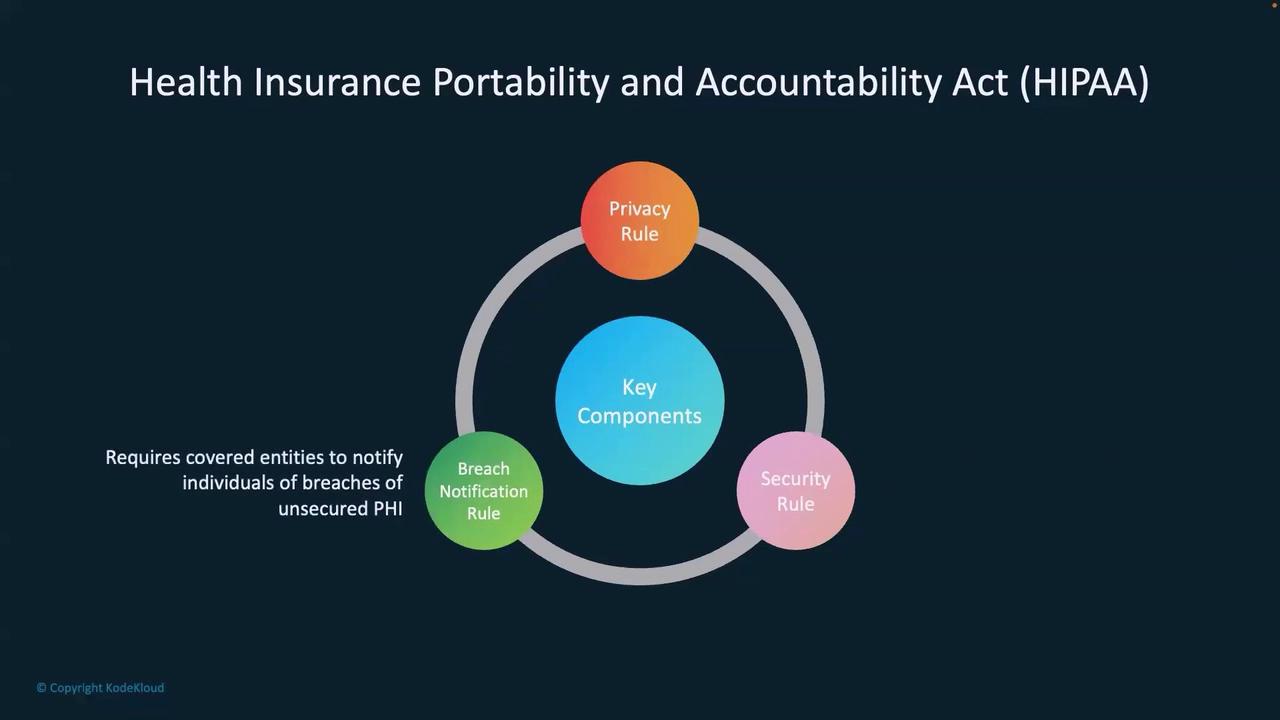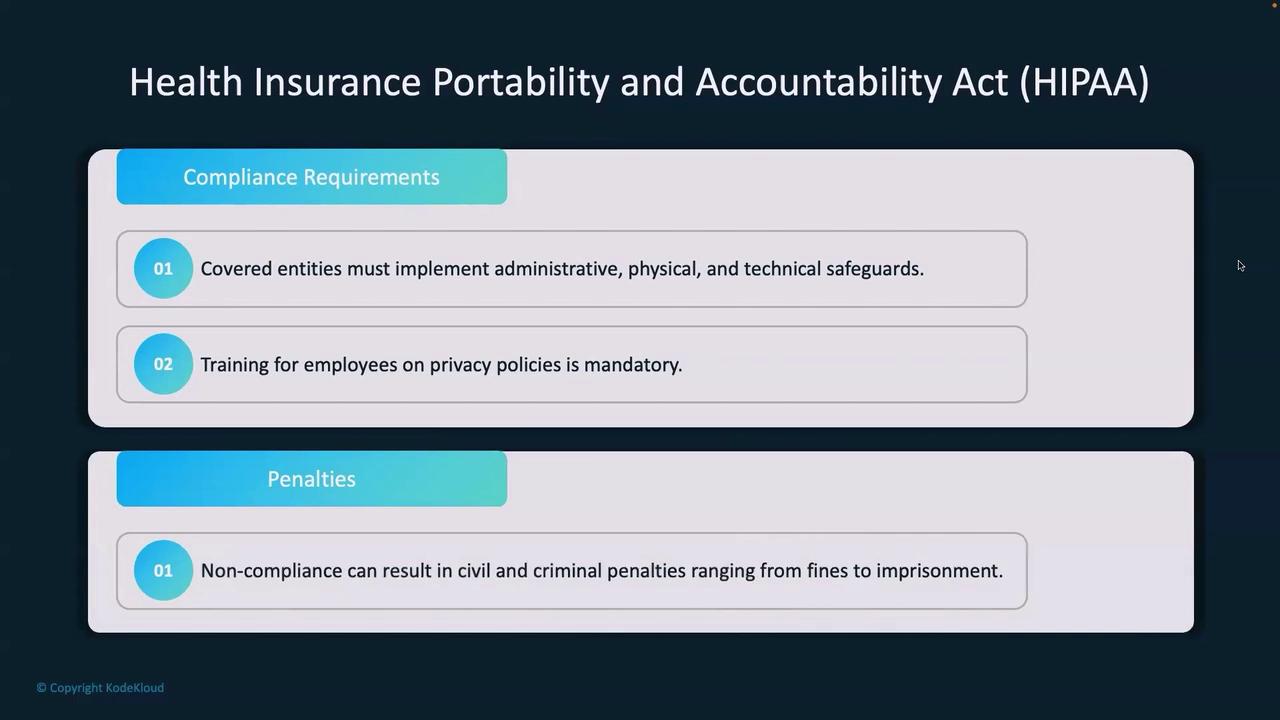Fundamentals of MLOps
Data Security and Governance
HIPAA Compliance
Welcome to our detailed guide on HIPAA compliance. In this article, we explore the key components of the Health Insurance Portability and Accountability Act (HIPAA), a U.S. law established in 1996 to protect sensitive patient health information. HIPAA ensures that your health records remain confidential and are not disclosed without your consent. In 2003, amendments further strengthened these protections amid advancing digital technologies.
Core Components of HIPAA
HIPAA is built on three fundamental rules:
Privacy Rule
Establishes national standards for protecting patients' health records. Under this rule, any medical records maintained at a clinic or hospital are kept strictly confidential.Security Rule
Focuses on safeguarding electronic health information. It mandates measures like encryption and multi-factor authentication to prevent unauthorized access to healthcare systems.Breach Notification Rule
Requires prompt notifications to patients if their data is compromised. For example, if a hospital experiences a data breach, it must notify all affected individuals to ensure transparency.

Together, these rules form the robust foundation of HIPAA, ensuring the protection and confidentiality of patient data.
Compliance Requirements
To remain HIPAA-compliant, organizations must implement a variety of safeguards:
Administrative Safeguards:
Policies and procedures to manage the selection, development, and maintenance of secure systems handling sensitive data.Physical Safeguards:
Controls to protect the physical facilities and equipment from unauthorized access.Technical Safeguards:
Measures such as secure logins, strict access control, encryption, and multi-factor authentication.
Employee Training
Employee training is critical. Organizations must regularly train staff on privacy policies and security protocols to ensure they handle sensitive data responsibly.
Non-compliance with HIPAA can result in severe penalties, including hefty civil fines, criminal charges, or even imprisonment. These consequences highlight the importance of adhering to HIPAA standards for both legal compliance and maintaining trust with patients.

Critical Reminder
Failure to implement robust HIPAA safeguards can not only lead to legal repercussions but may also damage your organization's credibility and trust among patients. Always ensure your systems and processes are up to date with HIPAA requirements.
HIPAA in the MLOps Lifecycle
Understanding HIPAA is essential, especially if your organization is involved in developing machine learning models using healthcare data. Compliance is crucial to verify data provenance, secure the training process, and manage sensitive information appropriately. Adhering to HIPAA safeguards helps mitigate risks and fosters trust when deploying health-related ML models.
Thank you for reading, and stay tuned for our next lesson on integrating HIPAA best practices in modern MLOps workflows.
Watch Video
Watch video content